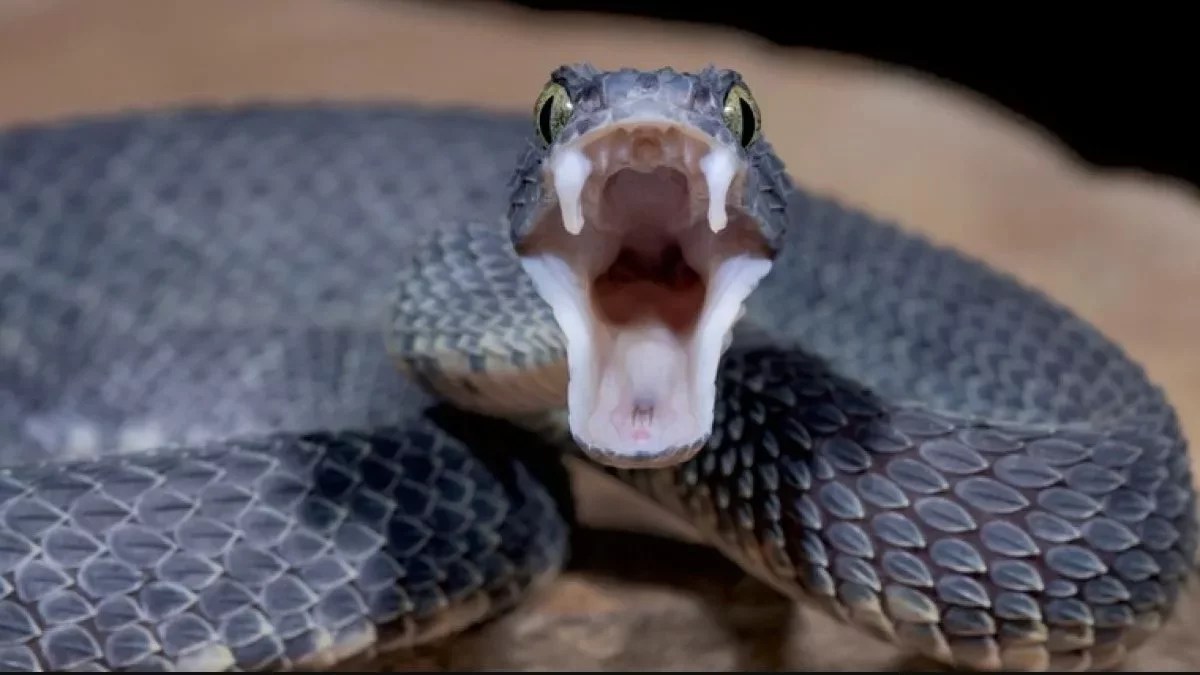When it comes to culinary adventures, the thought of eating exotic foods can be both thrilling and daunting. Among the many unusual options, venomous snakes often spark curiosity and debate. The question arises: can you eat venomous snakes? This article will delve into the fascinating world of snake consumption, focusing on the safety, preparation methods, and cultural significance of eating these reptiles.
Not all snakes are created equal, and while some may pose a danger due to their venom, others have become delicacies in various cultures around the world. Understanding the differences, as well as the precautions needed when handling and consuming venomous snakes, is crucial for anyone interested in exploring this unique culinary terrain.
Join us as we uncover the facts about eating venomous snakes, including preparation techniques, nutritional benefits, and the risks involved. By the end of this article, you'll be well-informed to make decisions regarding this exotic delicacy.
Table of Contents
- Introduction
- What Are Venomous Snakes?
- Are Venomous Snakes Safe to Eat?
- Nutritional Value of Snake Meat
- Cooking Methods for Snake Meat
- Cultural Significance of Eating Snakes
- Preparation Tips for Eating Venomous Snakes
- Conclusion
What Are Venomous Snakes?
Venomous snakes are species that produce venom, a toxic substance used primarily for immobilizing prey and defending against predators. There are over 600 species of venomous snakes globally, with some of the most well-known being:
- Black Mamba
- King Cobra
- Western Diamondback Rattlesnake
- Gaboon Viper
Despite their fearsome reputation, many cultures have found ways to utilize these snakes, not only for their skins but also for their meat. Understanding the biology and behavior of these snakes is essential for anyone considering eating them.
Are Venomous Snakes Safe to Eat?
The safety of consuming venomous snakes primarily depends on proper handling and cooking methods. Here are some key points to consider:
- Venom is not present in the meat: When cooked properly, the venom is neutralized, making the meat safe to eat.
- Proper Handling: It is crucial to handle venomous snakes with care and expertise to avoid bites during preparation.
- Cooking Temperature: Cooking snake meat to a minimum internal temperature of 165°F (75°C) ensures that any potential pathogens are killed.
However, it’s important to note that some individuals may have allergies to snake meat, which can lead to adverse reactions.
Nutritional Value of Snake Meat
Snake meat is not only a delicacy in some cultures but is also known for its nutritional benefits. Here’s what you can expect:
- High in Protein: Snake meat is rich in protein, making it a great source of energy.
- Low in Fat: Compared to other meats, snake is typically lower in fat, which can be beneficial for those monitoring their fat intake.
- Vitamins and Minerals: Snake meat contains essential vitamins and minerals, including B vitamins and iron.
Incorporating snake meat into a balanced diet can provide various health benefits, but it should be consumed in moderation, just like any other type of meat.
Cooking Methods for Snake Meat
There are various ways to prepare and cook snake meat, depending on regional preferences and personal taste. Some popular methods include:
1. Grilling
Grilling snake meat can enhance its flavor and give it a smoky taste. Marinating the meat beforehand can also improve its tenderness and flavor.
2. Stewing
Stewing snake meat allows it to absorb the flavors of the broth while becoming tender. This method is popular in many cultures that consume snake.
3. Frying
Fried snake meat can be crispy on the outside and tender on the inside. This method is often used in appetizers or snacks.
Cultural Significance of Eating Snakes
In many cultures, eating snakes is not only a culinary choice but also has deep cultural significance. Here are a few examples:
- Asian Cuisine: In countries like China and Thailand, snake soup is considered a delicacy and is believed to have medicinal properties.
- Indigenous Practices: Many indigenous cultures utilize snakes as a source of sustenance and as part of their traditional diets.
- Survival Food: In some regions, especially where access to meat is limited, snakes serve as a vital food source.
Understanding the cultural context of eating snakes can provide insight into why this practice persists in many parts of the world.
Preparation Tips for Eating Venomous Snakes
Here are some essential tips for safely preparing venomous snakes for consumption:
- Use Gloves: Always wear gloves when handling snakes to protect yourself from potential bites and contamination.
- Proper Tools: Use sharp knives and cutting boards specifically for snake preparation to avoid cross-contamination with other foods.
- Remove the Head: The head of the snake should be removed carefully to ensure that no venomous bites occur during preparation.
- Cook Thoroughly: Ensure that the meat is cooked thoroughly to eliminate any harmful bacteria or pathogens.
Conclusion
In conclusion, eating venomous snakes is not only possible but can also be a rewarding experience when done safely and responsibly. Understanding the proper handling, preparation, and cultural significance of snake meat can enhance your culinary journey. If you're adventurous enough to try snake meat, be sure to follow safety precautions and enjoy the unique flavors it has to offer.
We encourage you to leave a comment below sharing your thoughts on eating venomous snakes or any experiences you've had with exotic foods. Don't forget to share this article with friends or explore more culinary adventures on our site!
Thank you for reading, and we hope to see you back for more exciting and informative articles!




